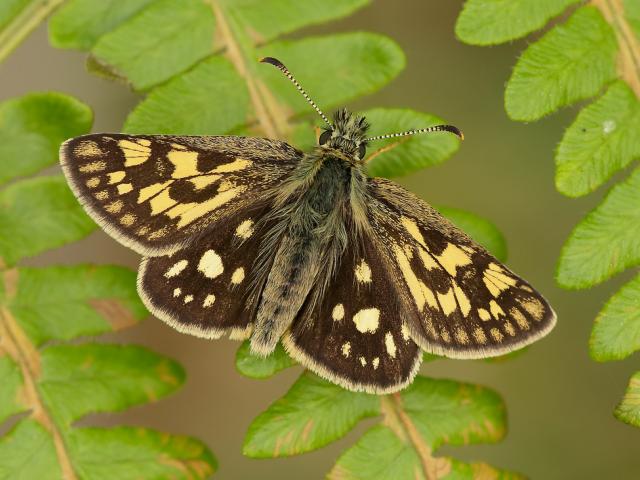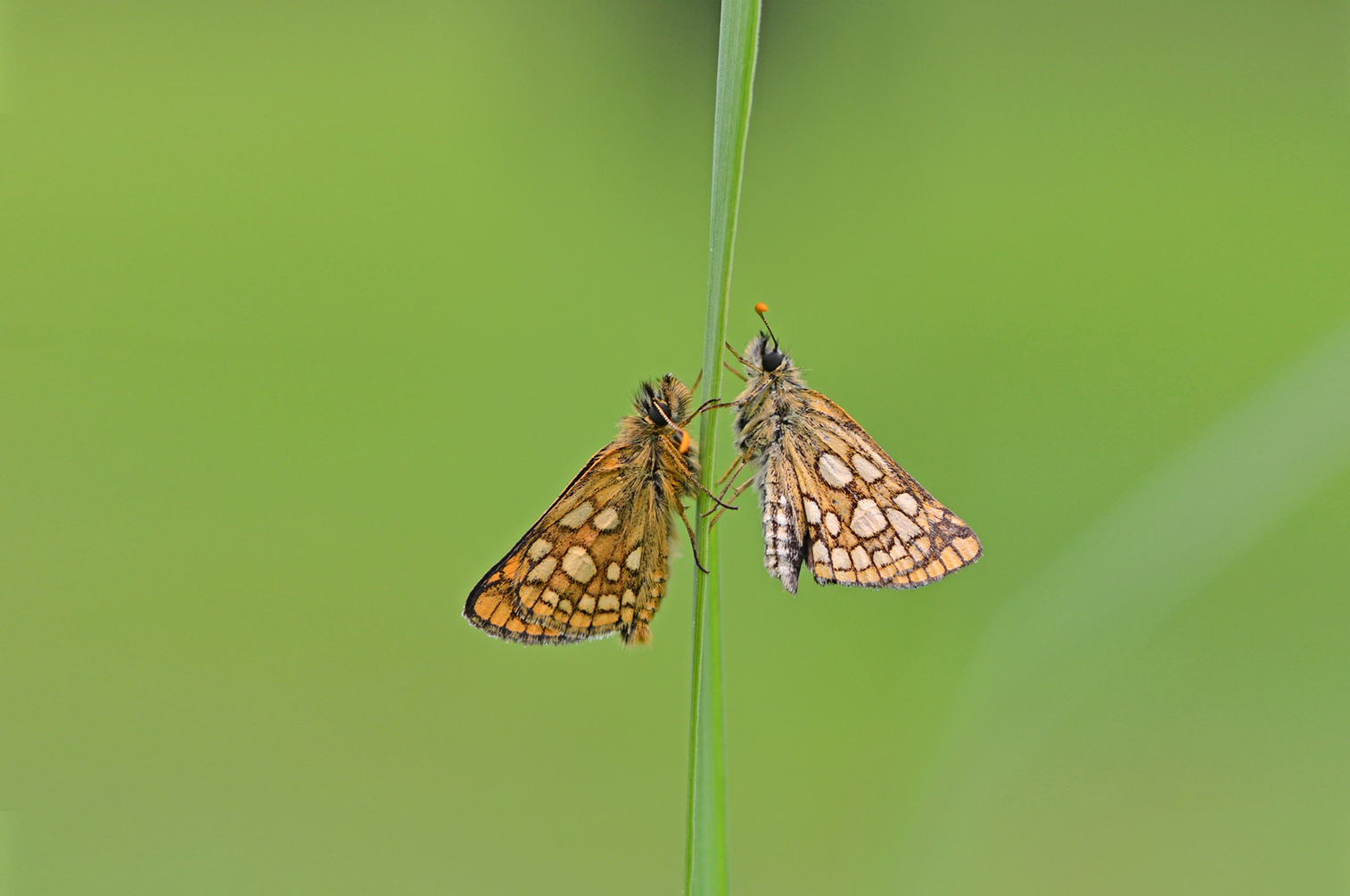It’s been almost two months since the Chequered Skipper butterfly took to the wing in England for the first time in 40 years. We were lucky to get lots of media coverage of the release which was a great opportunity to tell people more about the work we are doing, as well as allowing people to get a little glimpse of the butterflies in their new home. So what’s been happening since then?
Well, the hard work didn’t stop once the media spotlight had moved on to other things. A dedicated band of volunteers were on site every day following the release to monitor the behaviour of the butterflies, looking at how far they moved from the release points and seeing if they could observe any egg-laying behaviour. The weather was not ideal during this period with a lot of cool, dull days and rain interspersed with spells of sunshine - a bit hard to believe now as we bake in this hot, dry weather! The cool weather limited how active the butterflies were, but we still managed to get a good number of sightings and by the end of the two week recording period we could see that they had distributed well throughout the site, moving up to 700m from their release points.
As was the case when we were collecting them in Belgium, males proved easier to spot than females because of their territorial behaviour. Females were particularly good at employing avoidance tactics, suddenly disappearing into vegetation whenever they were being followed, which made it difficult to discover where they were laying their eggs. To try and see if we could find evidence of successful egg-laying, we went back to the site in mid-June to look for larvae. Once emerged from the egg, the caterpillar uses silk cords to form a tube on the blade of grass, which it lives in when not feeding. It then eats the grass above and below this tube, often leaving only the central vein, thereby creating a distinctive feeding pattern. So rather than looking for larvae (which would only have been 2-3mm long at this stage) we concentrated on looking for these tubes and feeding signs.

We enlisted the help of Peter Eeles from UK butterflies to do this, as he spent a lot of time looking for larvae in Scotland to produce some fantastic photographs of the different life stages. He thought we had a difficult job on our hands as the habitat down here is quite different to that in Scotland, with the food plant grasses being surrounded by a lot of other vegetation which made them more difficult to scan for larval signs. Perhaps, unsurprisingly, we didn’t have any luck on finding any larvae on this first occasion but we got some great tips and advice from Peter about what to look out for on subsequent visits.
Like many other places, Rockingham Forest has been basking in sunshine for several weeks with no rain. Although there are definite signs that the woodland rides drying out, it has been encouraging to see that there is still a lot of healthy looking vegetation and green grass. Chequered Skipper larvae need to feed until October, when they enter a dormant phase for the winter, so need their food plant to stay healthy over that time period. Adult females are pretty good at locating grass they think will be optimal for the survival of their larvae, so are likely to have chosen grass in areas that will be more resistant to dry conditions. However, if the dry weather continues for much longer I will definitely be brushing up on my rain dance skills. We’ll be carrying on the task of looking for Chequered Skipper larvae later in the summer/early Autumn when they will be bigger and their feeding signs more obvious, so I’ll keep you posted on any exciting developments!
Susannah O’Riordan
Rockingham Forest Project Officer - Back from the Brink


